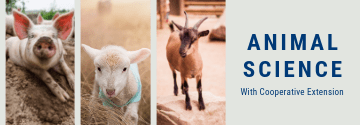Dr. Frank Pinkerton aka the “GOAT MAN” is coming to Delaware to talk about Goat Meat Management and Marketing: Opportunities and Constraints. Dr. Pinkerton will have several of his books available for purchase at the event.
Please join Delaware Cooperative Extension for a workshop on June 15, 2019 starting at 1:00 p.m. at the Delaware State University Agriculture Annex building – 1200 N. DuPont Hwy, Dover, De 19901. The list of topics to be covered include:
So You Want to Do Goats?
Meat Goat Industry Update.
Marketing Goats: Channels, Weights, Grades, Prices, and Fabrications.
Breeds of Goats and Procurement of Breeding Stock.
Meat Goat Management: Fundamentals of Nutrition and Feeding Practices.
FRANK PINKERTON
Frank Pinkerton is an East Texas native who earned his PhD from Texas A&M in 1967. After a storied career as an animal science professor and researcher in the U.S. and in Asia, Frank retired from academia in 1993. Since that time he has worked as a private consultant in goat marketing and management. He occasionally provides brokerage services to breeders across the country. Frank’s Q&A column in the Goat Rancher, “Frankly Speaking”, is one of the most-read items in Goat Rancher.
The cost of the registration is $10 and is due by June 1, 2019. You can register by going to https://www.eventbrite.com/e/goat-meat-managementand-marketing-opportunities-and-constraints-tickets60536199402 or make check/money order payable to Delaware State University and mail to Dr. Matthews at Delaware State University 1200 N. DuPont Hwy. Dover, DE 19901
For more information, to register, or for assistance due to disabilities contact: Dr. Kwame Matthews Cooperative Extension Small Ruminant Specialist Delaware State University 1200 N. DuPont Hwy. Dover, DE 19901 302.857.6540 kmatthews@desu.edu
Mr. Daniel Severson Cooperative Extension New Castle County Extension Agent University of Delaware 210 S. College Ave Newark, DE 19716 302.831.8860 severson@udel.edu


